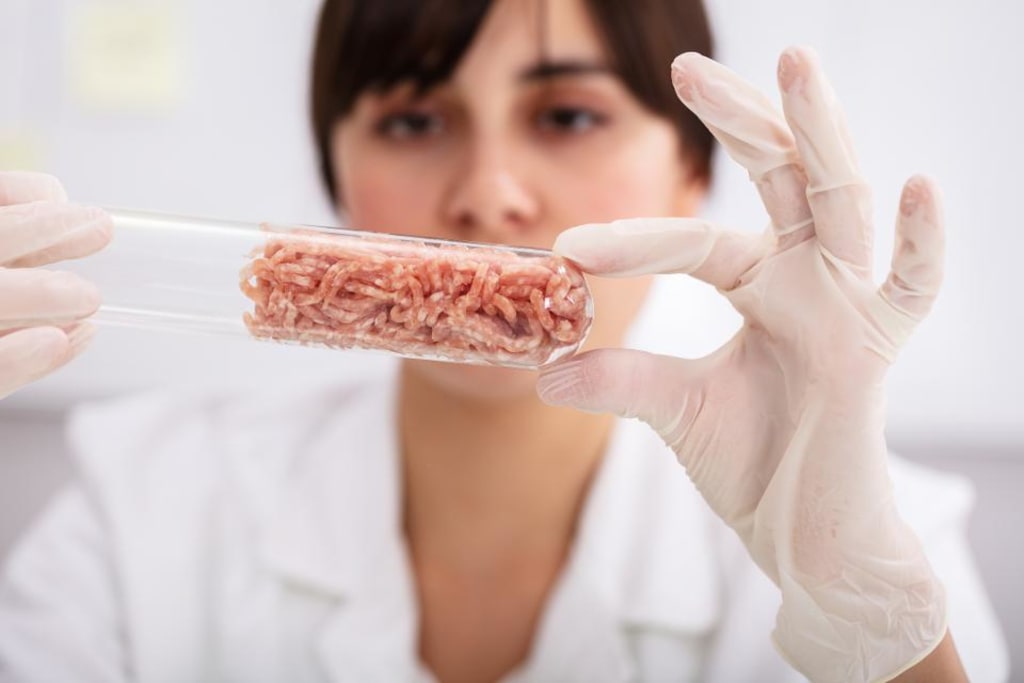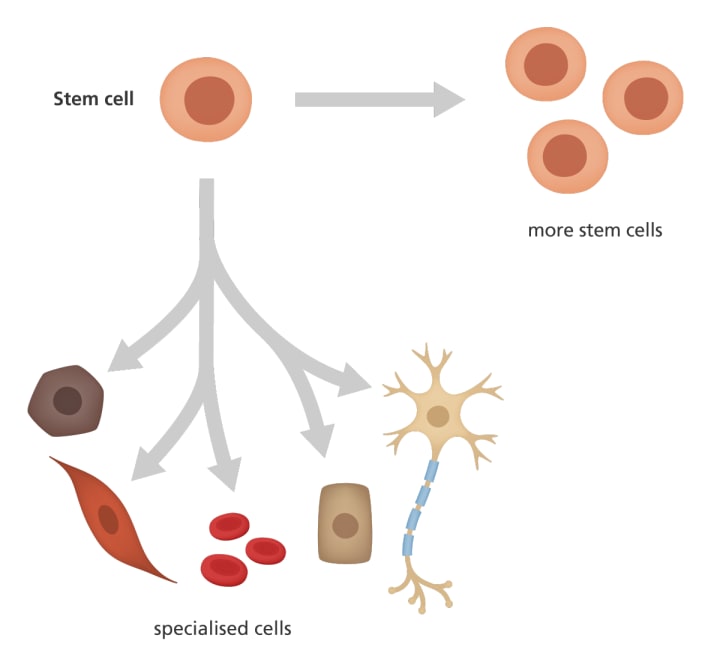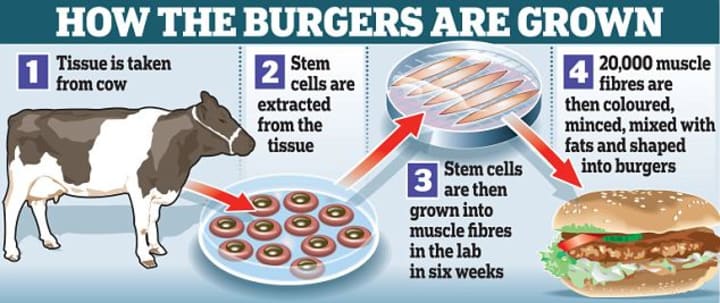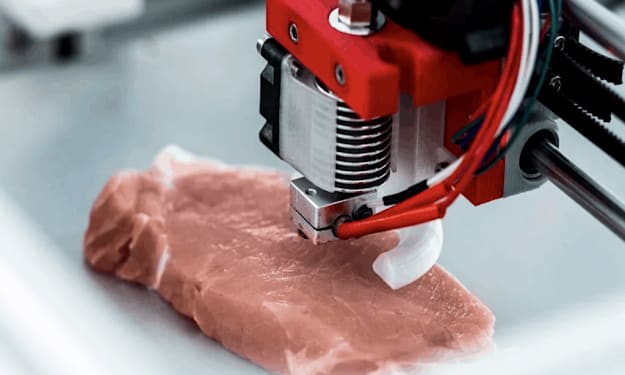What’s Lab-Grown Meat? Is It The Food Of The Future?
How’s it made and what are its pros and cons?

In 2013, a research team at the University of Maastricht in the Netherlands created edible meat in a lab using bovine stem cells, a world first. The ‘in vitro (outside the body or in the lab) meat project’ is aimed at rethinking the way we produce meat without the need to raise and kill animals. This is a crucial first step in the creation of a sustainable method for meat production. The final project aim was to create edible meat in the form of a hamburger without the direct use of bovine tissue.
What are stem cells?
Stem cells are undifferentiated cells present in all multicellular organisms with the capacity to both differentiate and multiply into different cell types that make up an organism.
Stem cells provide new cells for the body as it grows, and replace specialized cells that are damaged or lost. They have two unique properties that enable them to do this:
They can divide over and over again to produce new cells.
As they divide, they can change into the other types of cells that make up the body.

Why is there a need to produce synthetic meat?
There is a pressing need for alternative meat production techniques, both for demographic and ethical reasons. A study conducted by the Food and Agriculture Organization of the United Nations in 2006 estimated that 70% of all agricultural land, and around 30% of the Earth’s surface, is currently dedicated to livestock production to feed seven billion people.
The Food and Agriculture Organization of the United Nations also states that by 2050, the global meat demand will have increased by approximately more than two-thirds to cater to an estimated global population of 9 billion. This makes traditional methods of meat production increasingly unsustainable.
The traditional meat industry raises billions of animals and turns over $1tn a year. However, the huge environmental impacts have been made plain in recent scientific studies, from the emissions driving the climate crisis to wild habitats destroyed for farmland and the pollution of rivers and oceans.
Rearing cattle for meat production requires a lot of input in terms of money, space, and the consumption of natural resources. For example, producing 1 kg of meat requires around 15,000 liters of water.
How is meat actually made in the lab?

Stem cells are harvested from a sample of muscle tissue from a cow’s shoulder muscle and grown in a lab to create muscle tissue in six weeks. These stem cells (satellite cells) are called ‘dormant myoblasts (muscle cells)’. The stem cells are then exposed to various chemical stimuli akin to what happens in-vivo (in the body). The resulting lab-grown meat is devoid of fat and bones because only muscle stem cells are used-fat and bones come from corresponding cell types. This tissue is then colored, mixed with fat, and shaped into a burger ready for cooking.
In simple words, it’s just like cloning an entire organism or specific organs, but here muscle stem cells are stimulated to grow muscle strands on a plate in a lab, similar to what happens in an animal’s body.
As a matter of fact, the world’s first hamburger produced in 2013 cost about 330,000 US. However, by the end of 2021, the price of a lab-produced hamburger is expected to reach supermarkets and be within 30% of the price of a “normal” hamburger. A 100,000 price decrease in just 7–8 years.
Current trends in lab-grown meat production
A handful of firms are developing cultivated chicken, beef, and pork to slash the impact of industrial livestock production on the climate and natural disasters, as well as provide cleaner, drug-free, and cruelty-free meat.
Many firms have developed cell lines (cells from which meat is produced in the lab) for specific meat types-chicken, beef, pork, etc. circumventing the need to harvest biopsies from animals, making this way of making meat 0% cruel and completely guilt-free.
It is estimated that by 2040, most of the meat people eat will not come from slaughtered animals and that 60% will be either grown in industrial-scale bioreactors or replaced by plant-based products that look and taste like meat.
Pros and Cons of lab-grown meat
Pros
1. Can help meet the food demands of a growing population now, and in the future.
2. Can help minimize the negative sustainability, environmental effects, and animal cruelty issues of livestock agriculture.
3. Could free up space and resources for other uses.
4. Technology for lab-grown meat is consistently improving.
5. Potential to have animal-origin- free meat production in the future.
6. Some cultured meat can be produced far quicker than conventional farming.
7. Can add jobs to the economy.
8. Prices are steadily getting more affordable.
Cons
- The need for lab-grown meat is questioned — given that we already produce enough food for the world’s population.
- The causes of world hunger are caused by different problems compared to the solutions that lab-grown meat presents.
- Currently not affordable for everyone — production cost has been a major barrier thus far.
- There are possibly better, cheaper, and more effective ways to produce food for the human population.
- Lab-grown meat does not yet prevent the use of animals for meat.
- The positive impact of land-based agriculture is probably not talked about enough.
- Some sustainable, organic, open pasture, and other types of livestock farming may actually be better environmentally and from a sustainability perspective compared to lab-grown meat.
- Lab-grown meat has some of the same ethical concerns as GMOs.
- The taste of some lab-grown meat products is not to some people’s liking at this point.
Would you prefer lab-grown meat when it becomes commercially available and affordable?
The number of people who relish the taste of meat and the satiating feeling it gives when eaten is likely to be as large as the number of people who have an aversion to its taste. And some people like its taste but don’t consume it primarily due to everything that happens within the four walls of animal slaughterhouses. In my humble opinion, lab-grown meat, just like most other novel technologies, has its pros and cons, and there’s certainly a long road ahead before it convinces large masses. I have good hope that a good few years from now, both seasoned meat lovers and new fans of lab-grown meat will start consuming ‘clean/green/cruelty-free meat’ without any guilt. Lastly, it will also satisfy the ever-growing communities of ketogenic and other low-carb dieters.
........................
I am a Vocal Media Ambassador. Click here to enroll in the Vocal Fiction Awards. Write and submit as many fiction stories as you can until Dec 30.
25 winners. $125,000 in prizes. Free subscription to Vocal+. It’s my Vocal referral link. If you enroll using the above link, I will get a commission from the Vocal team to support my writing. Thank you.
.........................
About the Creator
The Soulful Scribbler
Teacher, Scientist, Writer, Reader, Poet
Enjoyed the story? Support the Creator.
Subscribe for free to receive all their stories in your feed. You could also pledge your support or give them a one-off tip, letting them know you appreciate their work.






Comments
There are no comments for this story
Be the first to respond and start the conversation.